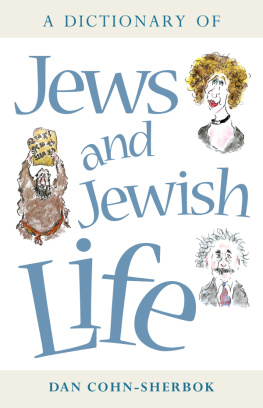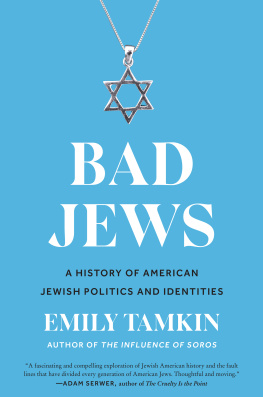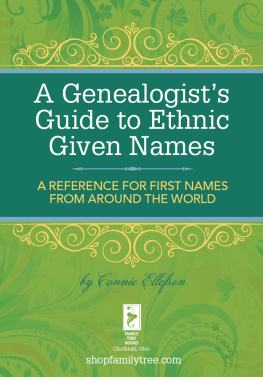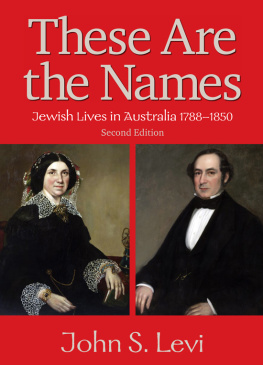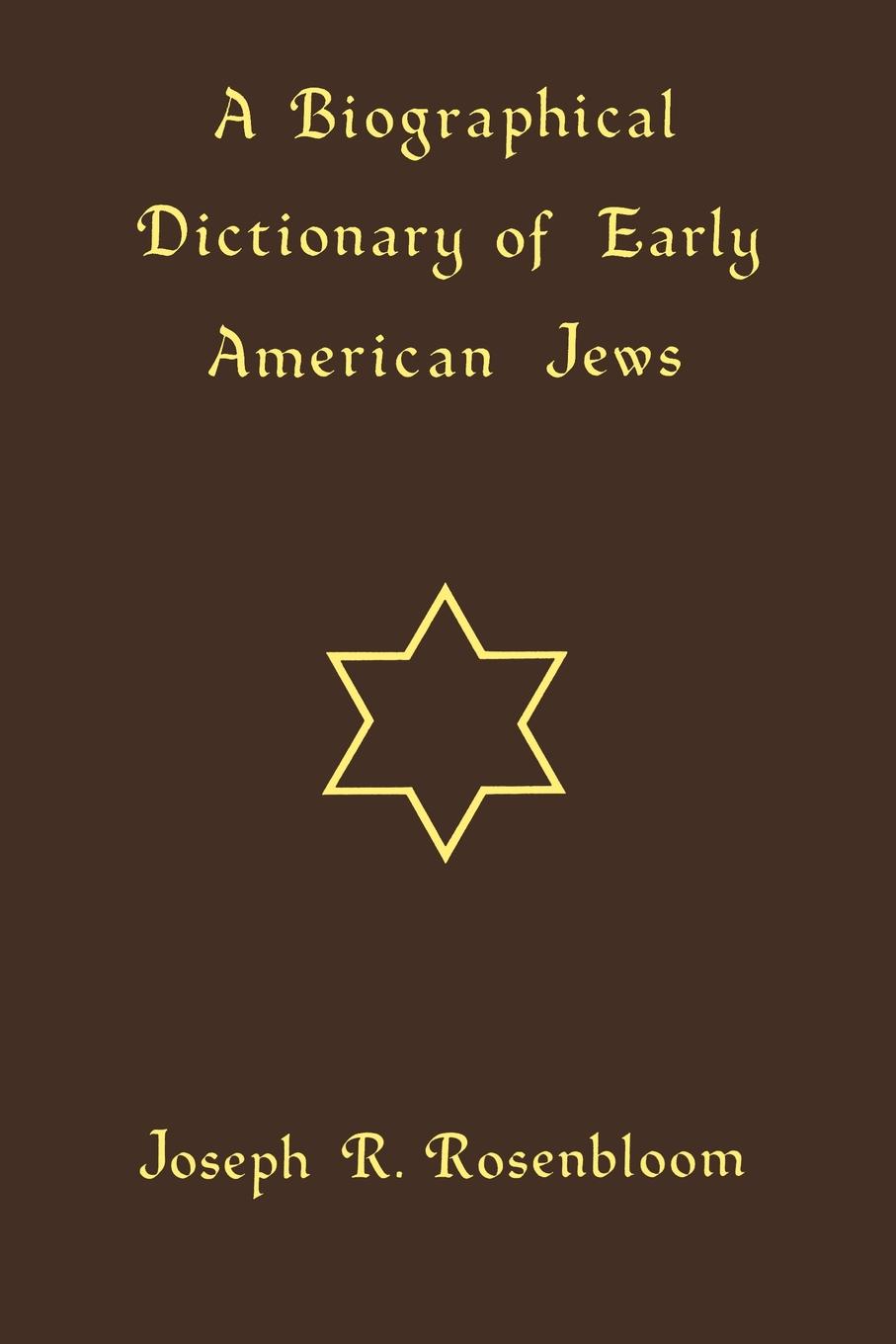A BIOGRAPHICAL DICTIONARY OF
EARLY AMERICAN JEWS
A BIOGRAPHICAL
DICTIONARY OF
EARLY AMERICAN
JEWS
Colonial Times through 1800
by
Joseph R. Rosenbloom

Copyright 1960 by the University of Kentucky Press.
Library of Congress catalog card no. 60-8517.
The publication of this book has been aided by a grant from the Margaret Voorhies Haggin Trust, established in memory of her husband, James Ben Ali Haggin.
CONTENTS
PREFACE
A Biographical Dictionary of Early American Jews: Colonial Times through 1800 is an attempt to provide a reference work for historians, a source for sociological and cultural analysis, and a basic tool for the study of American Jewish history. In it are named most Jews who lived in America during the late seventeenth, the eighteenth, and the early nineteenth centuries. The reader is cautioned, however, that although every effort has been made to examine the available published literature as well as manuscript materials, omissions are inevitable. The information on which the present volume has been based was derived from extant records; some individuals, of course, never found their way into the records, and others may have been mentioned only in records that have not survived. It may be estimated that at least some 20 percent of Americas Jewish population during this period remains totally obscure and unknown, but it is doubtful that their number would significantly alter the tendencies indicated by the material collected in these pages.
Every person identifiable as a Jew in America before 1800 is included in this dictionary. Incorporated also are Jewish converts to Christianity, and in a number of cases their children, when some contact with events involving other Jews has been noted. In many instances, persons with Jewish names and/or Jewish associations found their way into the lists of Jews compiled in previously published works. Often the Jewish identity of such individuals is doubtful. The frequent appearance of an obviously gentile Cohen, Myers, Levy, Franks, Isaacs, and the like, makes it impossible to identify persons as Jews on the basis of their names alone. The present volume takes special notice of such cases, as it does also with respect to persons gleaned from previously unstudied documents. In the analysis of the United States censuses of 1790 and 1800, a few persons could not be positively identified as Jews from contemporary synagogal records and from other sources; they are nevertheless included in this work.
One of the noteworthy facts, then, to emerge from the present volume is the extremely small percentage of Jews in America during the nearly two centuries covered by this dictionary. Without allowance for deaths and emigrations during the years in question, the data suggest that, during the entire period, no more than some 4,000 Jews, 1,500 of whom were born in America, are to be identified, and not all of these positively. In 1783 the population of the United States was estimated at 2,776,000. Viewed against this figure, Americas eighteenth-century Jewish population appears to be infinitesimal. It is the compilers hope that this dictionary will make it possible to test anew previous hypotheses as to the number of Jews in America during the colonial and early national period, their national origins, their occupations, their involvement in the Revolutionary struggle, the places in which they settled, and other features of early American Jewish life.
Since variant spellings abound for many of the surnames included in this dictionaryIsaacs, Nunez, Polock, and Rivera, to cite a few instancesthe compiler has generally found it advisable to reduce the variants to a uniform listing. There are, however, numerous instances where certain individuals elude positive identification, and cross references have been included in such cases of presumptive duplication.
A few terms peculiar to the organization of Jewish communal life have been included: bodek, a certified official charged with examining an animal or fowl before ritual slaughter; hazzan, a cantor or reader presiding over the synagogues worship services; mohel, a person authorized to perform the rite of circumcision according to Jewish law; shammas, a synagogal beadle or sexton; and, finally, shohet, a Jewish ritual slaughterer.
The work was initially undertaken in 1951 as a rabbinical thesis for the Hebrew Union CollegeJewish Institute of Religion. After its completion in 1954, the thesis was temporarily set aside while the writer completed his doctoral studies. Subsequently returning to it, he has added information from newly uncovered manuscripts as well as recent publications. Included also are Canadian materials up to the year 1783, when the national character of the erstwhile thirteen colonies changed from that of their northern neighbor.
Though the compiler himself assumes responsibility for the manuscript in its entirety, there are numerous debts to be acknowledged. From the very inception of this work, Professor Jacob R. Marcus, the compilers teacher and friend, selflessly made both himself and his excellent and extensive Americana collection available. In deepest personal appreciation, this dictionary is dedicated to the memory of Dr. Marcus beloved wife, Antoinette Brody Marcus.
Many others have given of themselves and their resources to make the publication of this volume possible. Dr. Malcolm H. Stern, genealogist of the American Jewish Archives, has made his own materials available. The debt to him is readily apparent from the many references to his personal collection and his manuscript, soon to be published, Americans of Jewish Descent. The staff of the American Jewish Archives, including Rabbi Stanley F. Chyet, Miss Sarah Grossman, and Miss Jeanette Weiss, has been most useful through the years. The University of Kentucky Research Fund placed at the compilers disposal two grants: one for travel to places where documents could be studied, and one for the final preparation of the manuscript. Mrs. Pat Hazel has been most valuable and resourceful in her preparation of the final transcript.
And, finally, the compiler acknowledges the patience and efforts of his wife Cordelia, through whose understanding and love this dictionary was enabled to enter its final phases and to achieve its completion.
SYMBOLS
AJAAmerican Jewish Archives, Cincinnati: Manuscript Collection.
AJAMAmerican Jewish Archives. Vols. I-XI. Cincinnati, 1948-1959.
ALDINEAldine Book Company. Catalogue of Americana-Judaica & Hebraica. Brooklyn, undated.
AlexanderAlexander, Henry Aaron. Notes on the Alexander Family of South Carolina and Georgia and Connections. Atlanta, 1954.
Arts & CraftsThe Arts and Crafts in New York, 1726-1776. Compiled by Rita Suss-wein Gottesman. New York, 1938.
BeekmansWhite, Philip L. The Beekmans of New York. New York, 1956.
BlumBlum, Isidore. The Jews of Baltimore. Baltimore, 1910.
ByarsByars, William Vincent. B. & M. Gratz, Merchants in Philadelphia, 1754-1798. Jefferson City, Missouri, 1916.
CarigalFriedman, Lee M. Rabbi Haim Isaac Carigal. Boston, 1940.
Census 1774Census of the Inhabitants of the Colony of Rhode Island and Providence Plantations, 1774. Providence, 1858.
Census AThe Census of 1790. Heads of Families at the First Census of the United States taken in the Year 1790


